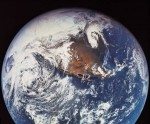
Productive change is a both scientific and an art form.
Scientifically-gifted change agents best-practices include these skills: distinguish organizational roles, reflect upon change models, implement change processes, and measure outcomes from change efforts.
Artful change engages collaboration beyond the accepted domains for creative solutions. Artful change agents observe the colors of change, touch textures of change, shape forms of change and listen to signs of change. Artful change skills are readily available to the agent, their subjective data is available immediately, and balance the scientific data from a right-brain perspective. Our culture relies on objective points of view which often dismisses comprehensive data. Grounded Change values skilled subjective data gathering with scientific data for two reasons. One reason is for an extensive status report of circumstances and second, for more directed and effecient strategy.
Change as an art form is not linear. Nevertheless, the results are measurable. Grounded Change best-practices bring more complete change. Agents skilled with the art of change facilitate measurable, sustainable, humanistic, collaborative results.
The scientific approach to change has appeal for its concrete observations and results. The art form of change discerns the abstract, the possibilities and the senses. This post takes a creative journey. From where you stand, through the macrocosm and back we study change. This learning adventure demonstrates the practicality of a greater perception of change; a creative, artful sensibility. This is not a far-out concept, but one that can be also validated with science. This view point is an integration of the practice of quantifiable change as well as that of creative. This post attempts to unfolds the Grounded Change approach.
Greater Vantage Points
Current scientific and art forms of change facilitate change processes. Yet, even from these perspectives, change is limited. Let’s take our view to a greater vantage point. Imagine the view of earth dwellers as they revolve on their blue, green planet. Each day the earth makes a full turn on its axis, referred to as one day. Monthly the moon orbits their earth. Each year earth inhabitants travel around the sun, known as a unit of time, one year. All the while this sun travels within its larger galaxy. Amazingly earthlings participate in a galactic symphony as they perform their daily duties. Change Agents note, more than what we perceive from our limited context affects our daily changes. The art form of change accesses expanded states of perception. Yet this level of skill is not readily accepted in today’s practice.
Beyond Current Practice
To impact change beyond current practice we critically think through its benefits and limitations. To progress change practices further, we observe change as an art form, an exploration of vastness.
From the current point of view, we often manage change mechanically. We are culturally trained to perceive change solely from its observable phases and forms. This is the accepted norm. We use tools limited to the change scenario. Combined with little regard to intangible factors, progress is limited. Nevertheless, these change practices are satisfactorily, well appreciated and valued. Without them, tremendous chaos would reign.
Additionally, cutting edge change agents integrate the latest global best-practices. These skills are useful since, as widely accepted, we now live in a global economy. Yet from an open-minded perspective we consider the scientific magnitude of our planet. Furthermore, we examine the solid core of the earth as well as the boundlessness beyond earth’s atmosphere. Meanwhile, our activities progress as the earth travels in units known as days, months and years. These time segments acknowledge our relationship to the immense force of our greater system.
It might seem foolish to creatively consider change from the perspective outside our daily life. However, one easily observes that our collective attitudes routinely neglect the greater, well-orchestrated, celestial exchange that we humans participate in every second. The prevailing leading change forms of science and art are effective yet, limited. Comprehension of our role with nature accelerates, broadens, directs, and encourages change. When we recognize that the sun is our primary form of sustenance, we understand that we are dependent on the source of earth’s energy. Likewise, our recognition and alignment with that flaming source conveys grounded, physical proportions not have reached otherwise.
Grounded Change
Change is more than a two dimensional graph represented by a horizontal axis for time and a vertical line to measure units of change. This is useful, just limited when you consider the spiral path we walk through our galaxy. Moreover, the cosmological composition and our unique role as earthlings is a marvel. Grounded Change aligns the latest practices of change with natural change-scapes via integrated methods that yield stunning transitions. This is a great learning adventure for progress with positive results. What do you want to harvest this season? Return to this website for more of the Grounded Change approach.
inspiration
In times of change learners inherit the earth; while the learned find themselves beautifully equipped to deal with a world that no longer exists.
Eric HofferWe think the whole world’s going to change, and forget that human beings are still human beings; we have the same five senses, we still interact the same way, we still love and hate the same way, but marketers lose track of that. But then it comes down to earth.
Michael K. Powell

